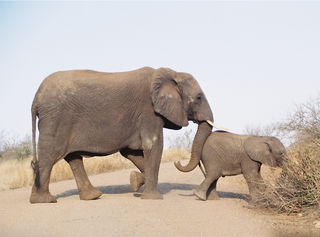Career
Nudge Theory: Why It Doesn’t “Work” During a Pandemic
Nudges are contradictory to many of the goals of state actors.
Posted May 9, 2020 Reviewed by Matt Huston
As the world continues to wrestle with COVID-19, it is not lost on me that we are existing within one large social experiment, watching as various states and countries make decisions that have the potential to affect public and economic health immensely. The pandemic has brought out many advocates for and against various policy decisions, and there is no dearth of criticism of the plethora of policies and tactics that countries and state actors have used.
One critic, Sonia Sodha, recently leveled her own criticisms at behavioral economics, specifically at nudge theory. Many of the arguments she raised were flawed on several levels. For example, she defaults to the financial conflict-of-interest bogeyman, but ignores what is likely more of an issue when it comes to advocates of behavioral economics: their ideological conflict of interest. Yet her conclusion is quite valid. Nudging doesn’t work in a global pandemic—at least not as a primary strategy. However, it isn’t for most of the reasons she argues—it isn’t because of a lack of evidence or because behavioral economists are biased. Even if all the claims and recommendations made by the Behavioural Insights Team in the UK were completely valid (and some of them were, as evidenced by lockdown fatigue), nudging is fundamentally antithetical to the goal of radically altering the behavior of a majority of people. To understand why, it is important to understand how nudging works (and doesn’t).

The Philosophy of Nudging
The field of behavioral economics seeks to better understand how people make choices and then subsequently influence choice-making tendencies so people make better decisions. Of course, there are a lot of different philosophies represented among advocates of behavioral economics when it comes to how best to accomplish the goal of influencing people’s choice-making tendencies. One such approach involves the use of the nudge, a policy concept popularized by Richard Thaler and Cass Sunstein in their 2008 book, Nudge.
Nudge theory is founded on three basic premises: (1) people often make intuitive decisions (i.e., decisions that occur without much conscious thought), (2) many of these decisions are not in the decision maker’s best interest, and (3) biases can be manipulated so that people will make better decisions.
At its core is the philosophy of libertarian paternalism, which is not as oxymoronic as it might sound. Essentially, this philosophy combines choice option availability (which means not restricting choices—libertarianism) with someone else getting to decide what is in the decision-maker’s best interest (a third party—paternalism). Nudging attempts to manipulate the choices people make so they make better decisions, but in a way that doesn't limit what decisions they can make. Numerous examples of nudging exist, such as making the best interest option the default (e.g., making retirement contributions opt-out rather than opt-in), making the best interest option more accessible (e.g., placing healthier snacks in more convenient store locations than unhealthier snacks), and attempting to elicit heuristics that result in best interest choices (e.g., making people more cognizant of unattended baggage at an airport by continuously reminding them through public-service announcements).
There is mixed support on the effectiveness of attempts to nudge behavior (for an evaluation of the effectiveness of the healthy food nudge, see here, here, and here). Yet, even if the evidence fully supported the effectiveness of nudging, it still wouldn’t work as a primary strategy for altering behavior in a pandemic.
Why Nudging Doesn’t Work in a Crisis
Gauri (2020) laid out some legitimate concerns with the ability of behavioral economics to offer effective strategies during the current COVID-19 pandemic. The concerns he laid out are all relevant and important, and I encourage you to read his article. However, in my assessment, there is one big issue he failed to address. Because nudging is a more subtle form of manipulation, the upper bound of its effectiveness will ultimately be lower than stronger and more overt forms of behavior manipulation.
The subtlety of nudging means there will be variability in how people respond to any given nudge based on their motives, personalities, and habits. Stronger, more coercive forms of situational pressures can reduce that variability. Weak situations (like a nudge) allow for more individual differences (e.g., personality, motivation) to drive behavior, whereas strong situations allow for less of that individuation.
This is further compounded by the fact that nudges only work when people lack strong attitudes or habits that are resistant to the nudge. The more drastically we want to change behavior, the less likely nudging is to work because people’s well-established habits tend to be resistant to subtle attempts to change them. If those habits are also linked to strong attitudes inconsistent with the nudge, subtle manipulation is likely to be largely ineffective.
At the onset of the current pandemic, many decision makers concluded that drastic behavior change was required (and in an extremely short time window). These changes meant altering people's well-established habits in a way that ran counter to many people’s strongly held attitudes regarding freedom and autonomy. Given those parameters, nudging would never have been able to work. Instead, many decision makers opted for more authoritarian paternalism: the chief executive decided what was in the best interests of people and made decisions that ultimately reduced their decision-making autonomy. The merits of the specific ways in which authorities have responded are open to debate. However, one conclusion is clear—given the drastic behavior changes many decision makers wanted to bring about, nudging was never going to work. It just isn’t useful in those situations.




